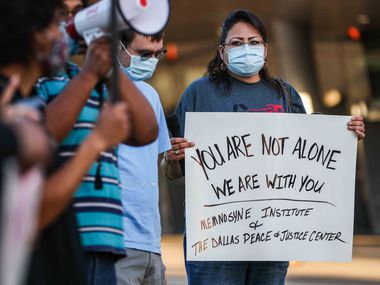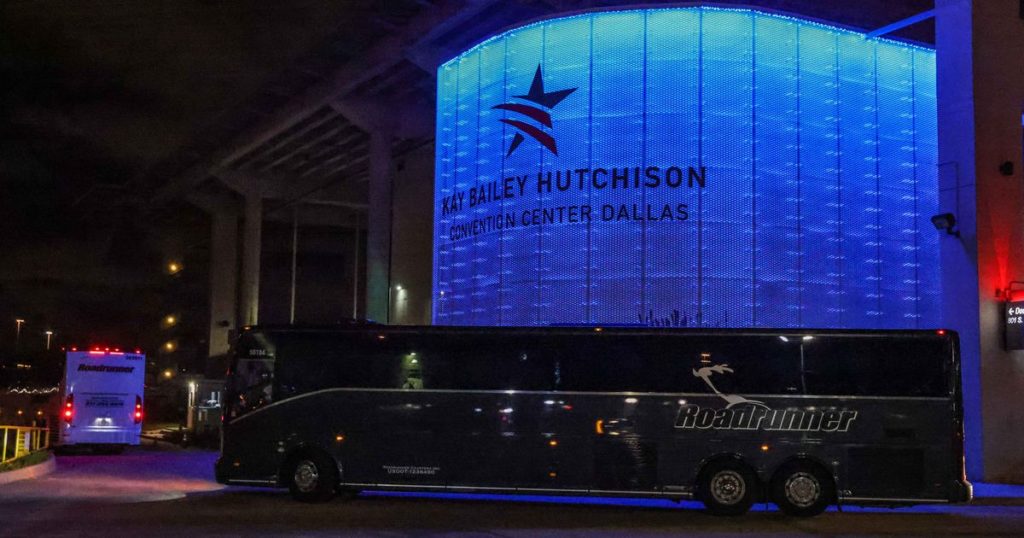Conditions for about 2,000 migrant teen boys at the temporary emergency shelter in downtown Dallas are worrying advocates and former contract employees.
The boys at the Kay Bailey Hutchison Convention Center suffer from a lack of fresh air and sunlight, depression and limited access to phones to call family. Fights have broken out among the boys as tensions have risen.
Some of the dozen people familiar with the conditions at the center who spoke to The Dallas Morning News about the center say the management of the boys’ asylum cases seems chaotic, with boys unclear about processes such as their pending family reunions, deportation cases, or why they are being held.
“This is a humanitarian crisis in the convention center,” said Josephine Lopez-Paul, Dallas Area Interfaith’s lead organizer who did volunteer work at the convention center. Like others interviewed, Lopez-Paul was taken aback by the number of children, mostly from Guatemala and Honduras, kept in one massive gray hall of the convention center, their metal cots in neat rows.
The Dallas center was initially billed as a “decompression center” for children and after it opened on March 17, it quickly filled to the capacity level of about 2,300 migrant boys between the ages of 13 to 17 years of age.
But many who have worked or volunteered there have described the pop-up detention center as inadequate and depressing for the children, though they acknowledge it’s better than conditions at the Border Patrol sites where they are initially processed after crossing the border any seeking asylum in the U.S.
U.S. Department of Health and Human Services, or HHS, and FEMA have contracted with private companies and nonprofits to assist. Virginia-based Culmen International and Austin-based Southwest Key Programs Inc. which runs licensed shelters and came under intense scrutiny in 2018 and 2019 over financial compensation and the treatment of children, have contracts.
HHS officials didn’t respond to repeated attempts to have questions about the facility answered, and Southwest Key referred inquiries to HHS.
But in a statement in releasing daily numbers on children in government custody, HHS said, “While increase in arrivals began in mid-2020, this administration’s goal is to move unaccompanied minors who arrive at our borders out of DHS custody and into HHS facilities, and ultimately place them with vetted family members or sponsors as quickly and safely as possible.”
Kids in Need of Defense, or KIND, is contracted to provide legal assistance for boys at the Dallas shelter and at four other locations.
“Our new reality is that we are working within a system that was designed going back three decades … when there were only a few hundred kids a year and now there a few hundred kids a day,” said Wendy Young, the attorney-president of the D.C.-based legal nonprofit. “The goal is to get those kids out of there as soon as possible,” and to make sure the children have access to lawyers.
Child welfare experts and those who have been at the Dallas convention center say immediate improvements are needed at the shelter.
“The Biden administration had a lot thrown at them,” when it took over in January from an administration hostile to immigrants and the asylum process, said Irene Mugambi, a Dallas immigration attorney who has also volunteered at the convention center. Many contract employees were rapidly hired. “Some of the contractors were saying crazy things to kids like, ‘You are going to get deported,’” Mugambi said.
“You don’t know how fragile they are.”
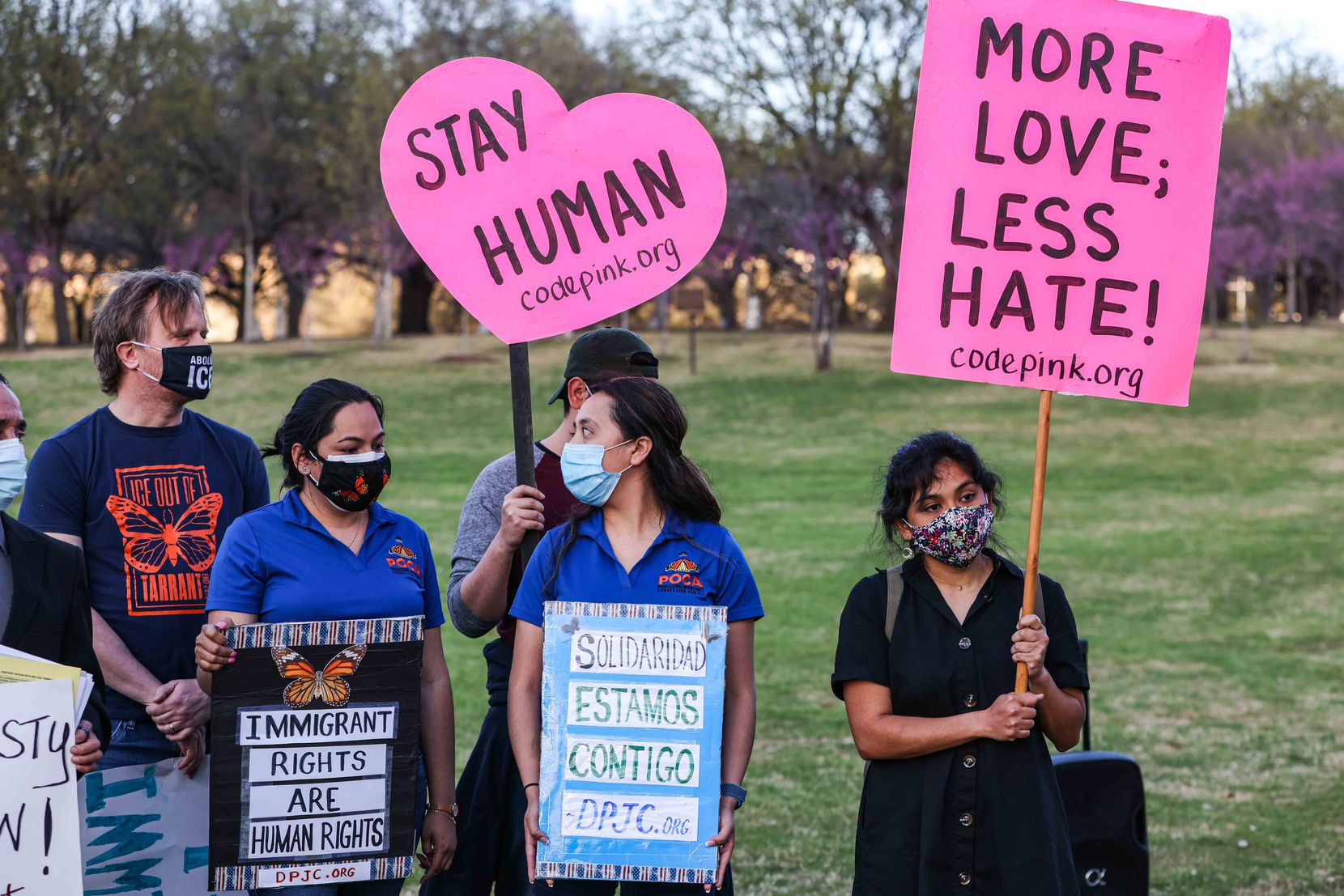
One person who asked to not be named for fear of losing the ability to work at the center, said they heard the deportation comment, too, adding that the paid contract employee “was calling them ladrones, thieves. ‘Son una bola de ladrones. Por eso los van a deportar a todos.’ “ You are a bunch of thieves and because of that they are going to deport all of you.
The worker interviewed by The News also said the boys were talked out of a hunger strike they planned as a protest to conditions there by arguing that the strike would be bad for their health.
Another person who has worked in the facility and asked not to be named for fear of losing access said they witnessed a few cases of children who stopped eating because of depression and others who had severe anxiety issues.
It is unclear how many migrant teens have come through the Dallas convention center, but estimates are more than 3,000 from those that have worked there. Federal authorities are not saying how long children are staying at the convention center before they are reunited with a sponsor, although on Sunday, Homeland Security Secretary Alejandro Mayorkas told reporters that the overall reunification time is about 30 days.
Young said migrant minors in emergency shelters were being reunited with a parent or legal guardian in 21 to 22 days. But the goal is 7 to 10 days. Children with a relative such as an aunt or grandmother take longer, Young said. “We are also hearing stories of kids exhibiting serious mental health problems,” she said. “These are kids who have obviously been traumatized in their own country, traumatized on the journey here and traumatized when they are taken into custody.”
One child was at the Dallas convention center for five weeks before his reunion with a family member.
“I am not a savior,” said the worker who noted depression and anxiety in the children. “I am just there to connect with another human being and tell them: They are not alone.”
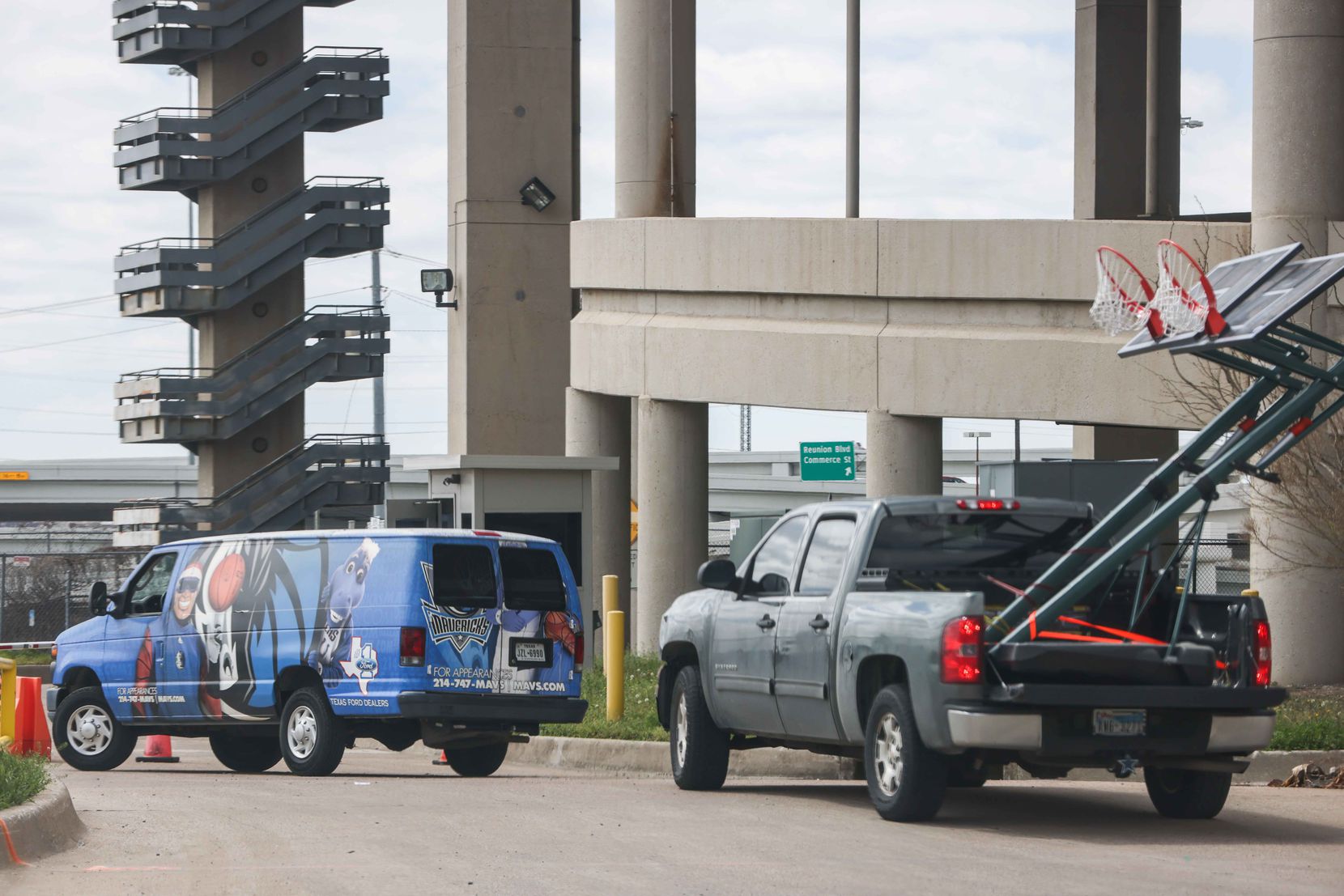
Flores Agreement
The conditions at the unlicensed temporary Health and Human Services shelter contrast with improvements in serious overcrowding at Border Patrol facilities, especially in the Rio Grande Valley. There are now about 700 unaccompanied migrant children in Border Patrol facilities — about an eighth the numbers of late March.
Nearly 19,000 unaccompanied minors traveling without a parent or a legal guardian were apprehended at the southern border in March, a record number that overwhelmed holding facilities of the U.S. Border Patrol. It was then that the federal government moved in to establish more than a dozen emergency shelters for better care and protection of the minors, as required by law and a federal court decree.
But conditions at the unlicensed emergency centers, which have little independent oversight, are damaging to children, said Dr. Amy Cohen, a Los Angeles-based child psychiatrist who founded the advocacy group Every Last One. Dr. Cohen has served for years as a consultant to attorneys monitoring detention facilities holding children under a landmark federal court agreement known as the Flores pact.
“They deteriorate psychologically, and some of them deteriorate really fast. They get depressed. They can’t sleep. They get sometimes withdrawn, hostile,” she said. “They can’t think straight. They can’t really process information well. They get excessively preoccupied with the need to be with families. And the sense that there is something like they’re being punished, and what have they done? Because that’s what it’s like, it’s like they’re in jail.”
Mugambi and others said that access to phones to call family is limited. Now, boys only receive one phone call a week for 10 minutes. At one point, the boys in Dallas were able to make two phone calls a week at five minutes each.
Much worse is when boys call home and no one answers, others said.
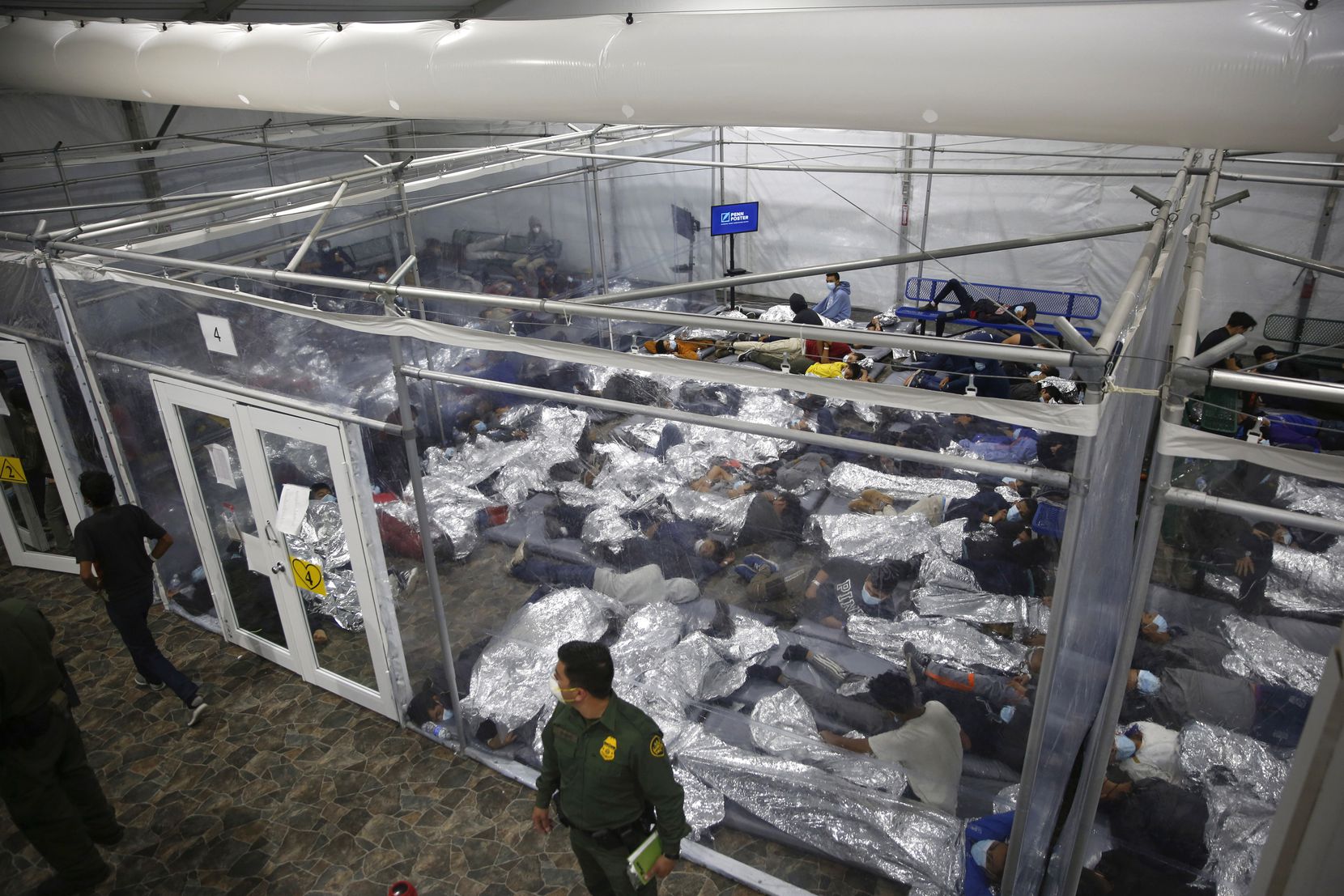
Another problem is that boys rarely get fresh air because they are confined to a convention center section, except when they take showers in an outdoor area that’s part of the complex.
Tempers among boys, at times, have flared. One former $25-an-hour contract employee, Scott Nichol, said there were several fights among the teens on his 12-hour shifts. Nichol worked at the site as security supervisor for five weeks before he was let go over an alleged dispute involving whether he grabbed a child by the collar. Nichol disputes the account and said a video proves he was wrongfully accused.
Boys are stressed because of the conditions inside the facility, including an inability to get outside except to go to portable showers, he said.
“It is pretty much like a prison, though they don’t call it that,” said the former security guard. “Not being able to see or run outside for five weeks has its toll.”
Why they are here
Under a federal anti-trafficking law, unaccompanied migrant teens and children must not stay in Customs and Border Protection custody for longer than 72 hours. Mayorkas said that time is now down to 20 hours. It soared as high as 133 hours in late March, when children and teens were held in startling crowded conditions, clutching silver Mylar blankets in cramped holding areas.
Normally, the unaccompanied children would be transferred to licensed shelters with contracts with HHS. But with the coronavirus pandemic and the need for social distancing, the number of beds were reduced. By January, the number of unaccompanied minors caught by the Border Patrol began rising until it peaked in March.
Child migration was high before in 2014, 2018 and 2019. In mid-March, Mayorkas said that the U.S. was on pace to hit records not seen in 20 years in the number of all immigrants encountered at the border. In 2000, the Border Patrol apprehended 1.6 million immigrants.
The bulk of them, usually single adults, are quickly expelled at the border under a public health order known as Title 42, whose controversial use began in March 2020 during the Trump era and has been continued by the administration of President Joe Biden.
The 1997 court settlement known as the Flores agreement establishes the standards for government detention of immigrant children. But the Flores pact has an exemption for emergencies, and “that is not an ideal situation,” said Young, of KIND.
Like most immigrant advocates, Young favors completely rebuilding the care and custody processes. She stressed that the children shouldn’t be left “in an information vacuum” about their case because children “can infer the worse.”
A key challenge has been efficient case management crucial to family reunions.
“There are many concerns that case management was not originally in place at the emergency intake sites,” said Mark Greenberg, acting assistant secretary for the Administration of Children and Families at HHS during Obama’s second term. “Without case management, children are needing to stay in our emergency intake sites for a much longer period than probably anyone would want.”
Greenberg, a senior fellow at the D.C.-based Migration Policy Institute, also said it is not clear what standards are being followed at the emergency shelters.
“In the normal shelter system, there are requirements for recreation time, including outdoor recreation. There are requirements for education. There are requirements for mental health staff and case management staff.”
In early April, an independent monitor of the Flores agreement highlighted the need for more oversight of temporary emergency facilities. The report, written by Los Angeles-based attorney Andrea Sheridan Ordin with a pediatrician, noted that CBP facilities for adults in the Rio Grande Valley were “stretched beyond thin,” and added, “It is not yet clear what systems of care have been developed to ensure the wellbeing of children housed in these new temporary Emergency Intake Sites.”
The $8 million contract for the shelter at the Kay Bailey Convention Center expires on June 2. There appear to be no plans to extend the contract. The remaining migrant children are expected to leave the Dallas facility for other shelters a few days before the expiration of the contract.
Those who have volunteered or worked there said one of the most joyful sights was when a migrant boy receives notification that they will be leaving for a family reunion. The room usually erupts in applause.
More recently, they boo, unhappy to see some leave after spending a shorter time at the center.
When leaving, boys often leave behind a disliked memento of their time there: ugly avocado-green rubber sandals.
